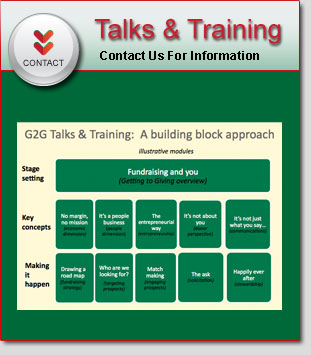New and Emerging Trends in Fundraising: Increased Focus on Harnessing the Enthusiasm of Volunteers
By Andrew Bradford, Executive Director, CCS
Volunteerism is back on the rise. According to national trends and statistics from the 2013 Giving USA report, 64.3 million Americans volunteered in the United States in 2011, an increase of about 1.5 million people from 2010. This equates to 7.9 billion hours of volunteered time, which translates into an equivalent of $171 billion contributed to charities and communities across the nation that year.
The 2013 Giving USA report also shares volunteer data from the Indiana University Lilly Family School of Philanthropy and Bank of America’s 2012 Bank of America Study of High Net Worth Philanthropy. Particularly interesting is that in 2011, a growing proportion of high-net-worth individuals volunteered their time, 88.5% compared with 78.7% in 2009. More than one-third of these volunteers gave 200 hours or more of their time in 2011.
As fundraising professionals, we understand that volunteers are integral to organizational success. But how do we harness volunteer enthusiasm to further organizational missions and maximize fundraising potential? Volunteers are protective of their time; they want to know that what they are doing is making a difference. Our role as volunteer managers is to make sure that their time, talent and interests are being used efficiently, as well as communicate the impact their commitment/involvement on the organization’s well-being and advancement of the mission.
Volunteers can be loyal donors and advocates; they inspire others and raise sights, and they also provide important donor perspectives to other volunteers. Talented volunteer managers excel at building volunteer enthusiasm, but often struggle to maintain it. Turning volunteers into long-term advocates and evangelists for your organization is crucial. Here are some ways that you can build on volunteer enthusiasm and momentum to position your organization for measurable success:
• Create individualized and attainable goals for each volunteer. Giving your volunteers a goal that they can achieve will give them something to strive towards that is far less intimidating than the overall campaign goal. Once your volunteers achieve their goal they will be inspired to do more.
• Create realistic benchmarks and timelines. By segmenting your campaign internally into monthly, quarterly and even annual timelines, your volunteers will see the direct impact they are having by meeting these benchmarks.
• Meetings raise money. Pull your volunteer group together on a regular and consistent basis. This will allow you, as the volunteer manager, to check in on their progress and relight their volunteer flame. This will allow them, as the volunteers, to be held accountable by their peers and lend their advice to the situations they are facing together as a group.
• Direct volunteer strengths. Don’t be afraid to redirect volunteers’ activities to utilize their strengths. Volunteers want to be successful and if we don’t set them up for success, they may walk away.
• Recognize your volunteers. Volunteer recognition is just as important to any campaign as donor recognition. Highlight your volunteers in both private and public ways. Let the world know that your organization is run by a powerful and passionate group of volunteers.
As you consider how your organization can harness the enthusiasm of volunteers and unlock the keys to campaign’s success, keep in mind that you are the captain of the campaign. It is up to you to build these skills, provide these goals and empower your volunteers to be successful.
Your volunteers are relying on you.
Source: The Giving Institute, Resources section 8/28/2013



